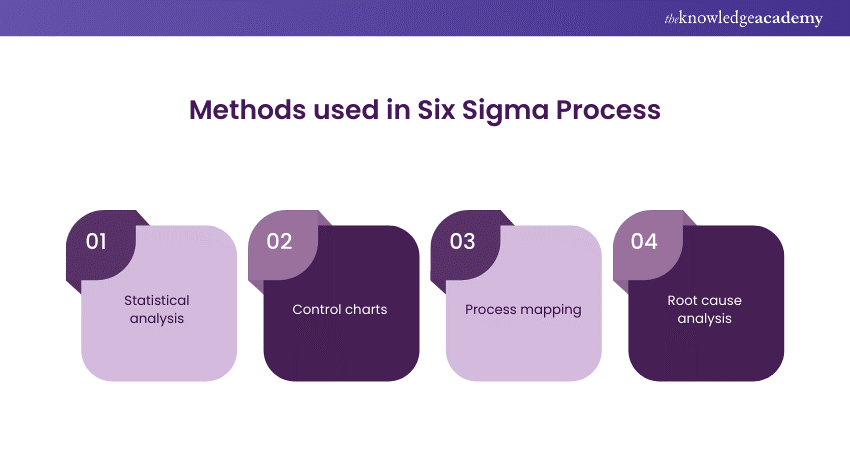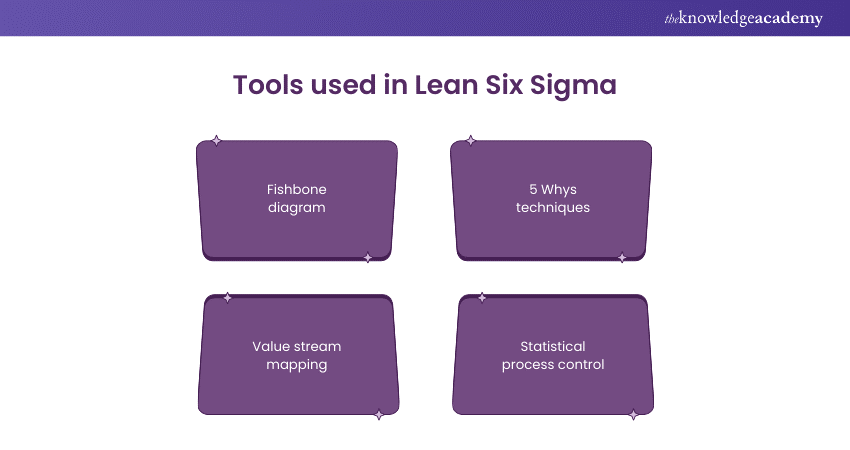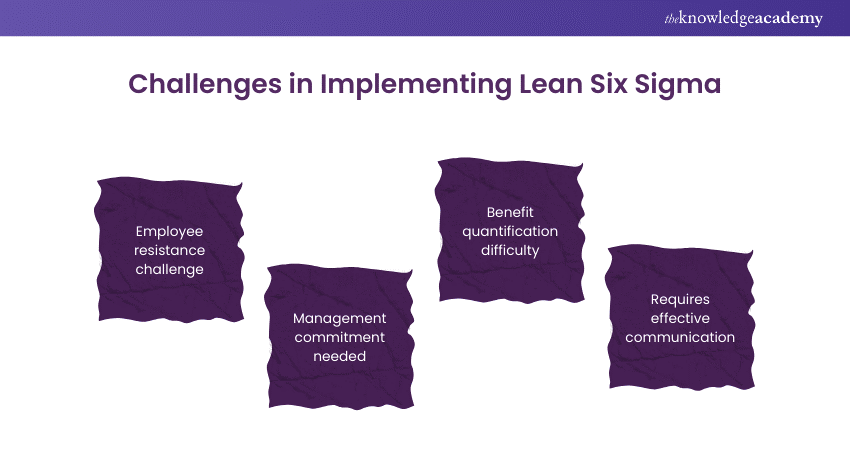We may not have the course you’re looking for. If you enquire or give us a call on +1 6474932992 and speak to our training experts, we may still be able to help with your training requirements.
Training Outcomes Within Your Budget!
We ensure quality, budget-alignment, and timely delivery by our expert instructors.

Are you preparing for a Lean Six Sigma interview? Knowing important Lean Six Sigma Interview Questions is crucial to stand out from other candidates. In this blog, we'll explore the essential Lean Six Sigma Interview Questions, giving insights into what interviewers seek and how you can impress them with your knowledge. Mastering these questions will showcase your proficiency in Lean Six Sigma Principles and practices.
Table of Contents
1) Lean Six Sigma Interview Questions and Answers
a) Can you explain what Lean Six Sigma is?
b) How would you describe the concept of “Lean”?
c) What advantages does Lean Six Sigma offer?
d) Can you differentiate between DMADV and DMAIC?
e) Could you detail the various methods utilised in the Six Sigma process?
f) What fundamental principles underlie Lean Six Sigma?
g) How do you decide whether a Six Sigma project should be led by a Green Belt or a Black Belt?
h) What does SIPOC stand for?
i) What are the three main steps in root cause analysis?
j) What responsibilities does a Green Belt have in Lean Six Sigma?
2) Conclusion
Lean Six Sigma Interview Questions and Answers
We have put together a list of the top 20 Lean Six Sigma Interview Questions with their detailed answers. Let's take a look:
1) Can you explain what Lean Six Sigma is?
The interviewer wants to see if you understand the Lean Six Sigma method and why it's important.
Sample answer: Lean Six Sigma is a method that combines Lean's focus on cutting waste with Six Sigma's emphasis on improving processes. It aims to enhance business performance by reducing unnecessary elements and variations. This mainly helps make manufacturing processes better, reduce costs, and ensure quality.
2) How would you describe the concept of “Lean”?
The interviewer here, is testing your knowledge of Lean principles and how they are used to improve processes.
Sample answer: Lean is a way to reduce waste by removing steps in production and service that don't add value. It significantly boosts the efficiency and quality of processes. It focuses on delivering the most value to customers with the least waste, leading to more efficient and effective operations.
3) What advantages does Lean Six Sigma offer?
The interviewer wants to know if you understand the benefits of combining Lean and Six Sigma practices.
Sample answer: Lean Six Sigma provides major benefits by merging Lean's efficiency with Six Sigma's structured approach to solving problems. This blend leads to quicker improvements in processes with lasting quality, which is essential for increasing customer satisfaction and cutting down on operational costs.
4) Can you differentiate between DMADV and DMAIC?
The interviewer is checking if you can tell the difference between these two Six Sigma methodologies and their uses.
Sample answer: DMADV, which stands for Define, Measure, Analyse, Design, Verify, is used to help develop new products and processes. DMAIC, or Define, Measure, Analyse, Improve and Control, is aimed at improving existing processes. DMADV focuses on creating systems that meet customer needs, while DMAIC improves current systems.
5) Could you detail the various methods utilised in the Six Sigma Process?
The interviewer wants to check your knowledge of different Lean Six Sigma Tools and techniques.

Sample answer: Six Sigma uses many methods to analyse and improve processes. These include statistical analysis, control charts, process mapping, and root cause analysis. These tools help find defects, understand their causes, and create lasting solutions to enhance quality and efficiency.
6) What fundamental principles underlie Lean Six Sigma?
The interviewer wants to test your understanding of the core principles that guide Lean Six Sigma practices.
Sample answer: Lean Six Sigma's vital concepts are the client/customer value, the reduction of wasteful activities, the reduction of the amount of variation, and the development and usage of the existing data (fact-driven analysis). This mainly helps make manufacturing processes better, reduce costs, and ensure quality.
7) How do you decide whether a Six Sigma project should be led by a Green Belt or a Black Belt?
The interviewer wants to understand if you know the roles of different Six Sigma belt levels.
Sample answer: Deciding between a Green Belt or a Black Belt to lead a Six Sigma project depends on the project's size and complexity. Green Belts handle smaller projects or are part of teams in larger projects. Black Belts manage more complex projects that need someone to work on them full-time.
8) What does SIPOC stand for?
The interviewer wants to see if you know what SIPOC is and why it's used.
Sample answer: SIPOC stands for Suppliers, Inputs, Process, Outputs, and Customers. It is a tool in Six Sigma that helps outline a process at a basic level. This helps in understanding how the process works and identifying important parts before starting a detailed analysis.
9) What are the three main steps in root cause analysis?
The interviewer wants to see if you understand the root cause analysis process and how it's used to solve problems.
Sample answer: The three main steps in root cause analysis are as follows: First, identify the problem. Second, analyse the data to find the root cause. Third, implement solutions to prevent the problem from happening again. This approach ensures that we address the real cause of the problems, not just the symptoms.
10) What responsibilities does a Green Belt have in Lean Six Sigma?
The interviewer wants to know what you think a Green Belt does in Lean Six Sigma.
Sample answer: A Green Belt in Lean Six Sigma works on improving projects in their area. They use Six Sigma tools to make processes better and solve quality issues. They often help teach their project team the basics of these methods.
Enhance your process improvement techniques with our Six Sigma Yellow Belt Course - join today!
11) Can you list some tools used in Lean Six Sigma?
The interviewer wants to know if you can name tools that help in Lean Six Sigma.

Sample answer: Lean Six Sigma uses several tools to improve processes. These include the Fishbone Diagram for identifying root causes and the 5 Whys technique for deeper problem understanding. It also uses Value Stream Mapping to analyse flows and Statistical Process Control (SPC) to monitor and manage performance.
12) How do you measure the success of a Lean Six Sigma initiative?
The interviewer wants to know how you find out if a Lean Six Sigma project is successful.
Sample answer: The success of a Lean Six Sigma project is measured by its effects on important factors like process duration, cost savings, customer satisfaction, and error reduction. It's crucial to assess whether these improvements are sustained over time. This ongoing improvement is essential for lasting success.
13) Could you explain the Pareto Principle?
The interviewer is checking if you understand the Pareto Principle and how it is used in improving processes.
Sample answer: The Pareto Principle, also known as the 80/20 rule, states that 80% of the results often come from 20% of the causes. In Lean Six Sigma, this principle helps us focus on the few crucial issues that have the largest impact on performance.
14) What is the difference between Cpk and Ppk?
The interviewer wants to see if you know the statistical measures used in analysing how well a process meets its goals.
Sample answer: Cpk, or Process Capability Index, and Ppk, or Process Performance Index, both measures how well a process fits within its limits. Cpk looks at how centered the process is within these limits and uses data from within groups. Ppk does not assume the process is centered and uses all available data.
15) What are the major challenges you encounter in implementing Lean Six Sigma?
The interviewer wants to understand what difficulties you think are in the way of successful Lean Six Sigma projects.

Sample answer: The big challenges in Lean Six Sigma are getting people to accept change, making sure senior management stays committed, and showing the value of improvements. To deal with these, we need good change management, consistent support from leaders, and clear communication about the benefits.
16) How would you go about creating a SIPOC process map?
The interviewer is interested in your systematic approach to developing a SIPOC diagram, a fundamental Lean Six Sigma tool.
Sample answer: To create a SIPOC process map, I would begin by setting the scope of the process. Next, I would identify the main components: Suppliers, Inputs, Process steps, Outputs, and Customers. I would collect detailed information for each component from teams across different functions. This helps to ensure we see the process fully from beginning to end.
17) What does Value Stream Mapping mean?
The interviewer is interested in your understanding of Value Stream Mapping. They want to know if you can use it to spot waste and make processes better.
Sample answer: Value Stream Mapping is about making a detailed visual map of the paths that materials and information take to reach the customer. It shows where waste occurs in these paths. It also acts as a guide for applying lean methods to make the process smoother and less wasteful.
18) Could you define VSM?
The interviewer wants to check if you can clearly define Value Stream Mapping (VSM).
Sample answer: VSM stands for Value Stream Mapping. It's a tool in lean management. It shows all the steps needed from when a product is first thought of until it reaches the final customer. The aim is to make the process more efficient by getting rid of waste.
Master your problem-solving skills with our Black Belt Course - register today!
19) What is MSA in the context of Lean Six Sigma?
The interviewer wants to know if you understand Measurement System Analysis (MSA) and why it's important in quality control.
Sample answer: MSA stands for Measurement System Analysis. It's a crucial part of Lean Six Sigma. It checks how accurate and precise the measurement tools and systems are. MSA makes sure that the data we use to see changes in processes are consistent, reliable, and correct.
20) What are the primary distinctions between Lean and Six Sigma?
The interviewer seeks a clear differentiation between the Lean and Six Sigma methods.
Sample answer: The main difference between Lean and Six Sigma is their goals. Lean focuses on removing waste and improving the flow of processes. This makes processes faster and more efficient. Six Sigma focuses on reducing variation and improving quality. It uses statistical methods to lower defects and errors.
Conclusion
Having familiarised yourself with the mentioned Lean Six Sigma Interview Questions will put you at the best position to ace-up in your next job interview. Showing of a comprehensive knowledge and practical application of Lean Six Sigma can significantly increase your probability of not only leaving the hiring manager with a lasting impression, but also with the conviction of your competency in your area of expertise.
Improve your organisational efficiency through our Six Sigma Green Belt Course - join today!







 Top Rated Course
Top Rated Course




 If you wish to make any changes to your course, please
If you wish to make any changes to your course, please


